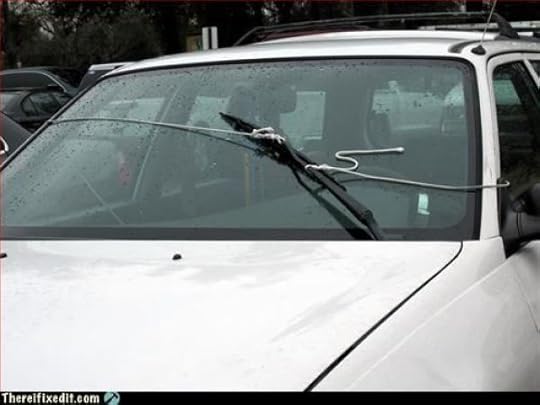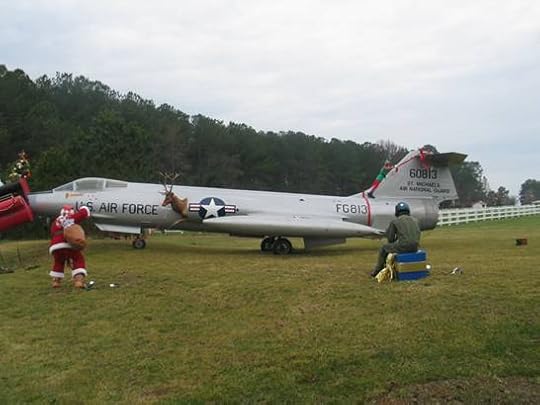Tosh McIntosh's Blog, page 11
January 12, 2012
Men Can Fix Anything
Note: If you are looking at the Home Page Fighter Pilot Header, click on the post title to view its dedicated page and Featured Image Header.
Have you ever wondered why no one ever uses the term "handywoman?"
Well, now you need ponder that question no longer, because here's photographic evidence of male practical ingenuity at work designing solutions for a wide variety of problems that can make everyday life troublesome.
Don't have a spoon? I can fix that!
 Seatbelt broken? I can fix that!
Seatbelt broken? I can fix that!
 TV too large for the old cabinet? I can fix that!
TV too large for the old cabinet? I can fix that!
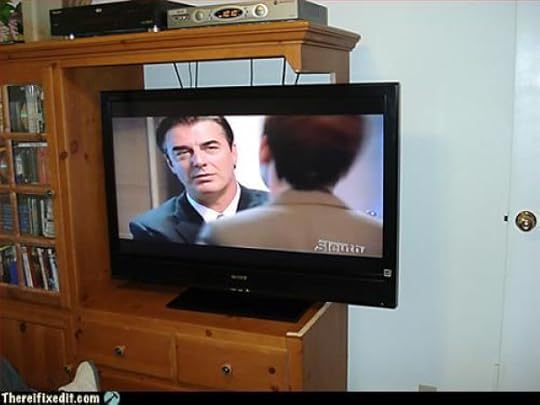 Electrical problem? I can fix that!
Electrical problem? I can fix that!
 Car stereo stolen? I can fix that!
Car stereo stolen? I can fix that!
 Bookshelf cracking under the weight? I can fix that!
Bookshelf cracking under the weight? I can fix that!
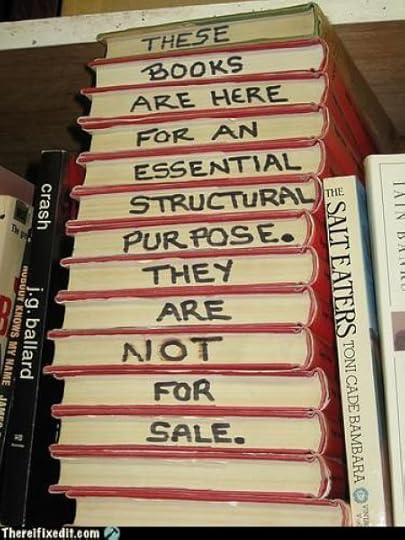 Can't afford a real GPS? I can fix that!
Can't afford a real GPS? I can fix that!
 Can't read the ATM screen? I can fix that!
Can't read the ATM screen? I can fix that!
 Car imported from the wrong country? I can fix that!
Car imported from the wrong country? I can fix that!
 Satellite go out in the rain? I can fix that!
Satellite go out in the rain? I can fix that!
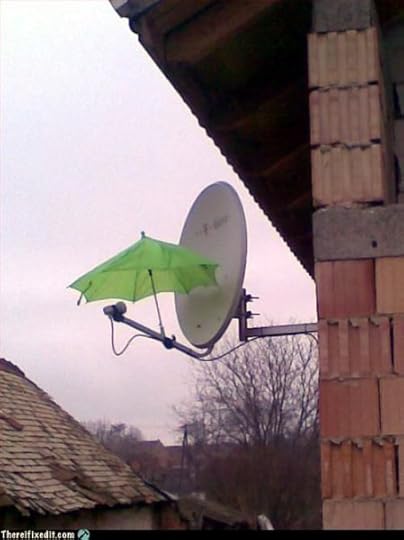 Electric stove broken and can't heat coffee? I can fix that!
Electric stove broken and can't heat coffee? I can fix that!
 Wiper motor burned out? I can fix that!
Wiper motor burned out? I can fix that!
 Display rack falling over? I can fix that!
Display rack falling over? I can fix that!
 Exhaust pipe dragging? I can fix that!
Exhaust pipe dragging? I can fix that!
 Gotta feed the baby AND do the laundry? I can fix that!
Gotta feed the baby AND do the laundry? I can fix that!
 Cables falling behind the desk? I can fix that!
Cables falling behind the desk? I can fix that!
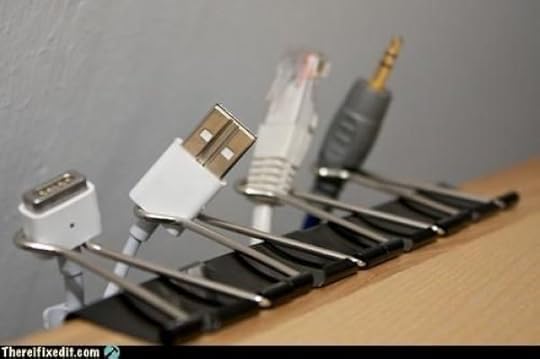 Out of diapers? I can fix that!
Out of diapers? I can fix that!
MR. HANDYMAN CAN!
January 11, 2012
News Release
BooksOnBoard Reveals This Week's Bestselling US Authors and eBooks
WEBWIRE – Monday, January 09, 2012
One Cold Night, a crime thriller by Katia Lief–who also writes as Katia Spiegelman and Kate Pepper–made its way onto BooksOnBoard's US Bestsellers list after debuting on the UK Bestsellers list last week.
"Though it is still not commonplace, an increasing number of authors who choose the route of self- or indie-publishing are making a mark on ebook bestsellers lists" said Bob LiVolsi, founder and CEO of BooksOnBoard. "Katia Lief, Tosh McIntosh and Nina Croft are prime examples."
Tosh McIntosh's thriller Pilot Error and Nina Croft's paranormal romance Break Out have spent several weeks on BooksOnBoard's UK and US Bestsellers lists. "It is exciting to watch these authors' reputations grow, and wonder who will be the next to join them," LiVolsi added.
Locked On — Tom Clancy
Touch of Power — Maria V. Snyder
Down the Darkest Road — Tami Hoag
77 Shadow Street — Dean Koontz
One Cold Night — Katia Lief
Pilot Error — Tosh McIntosh
V is for Vengeance — Sue Grafton
Red Mist — Patricia Cornwell
No Mercy — John Gilstrap
The Devil's Gold — Steve Berry
Bestselling Romance eBooks
Whispers in the Dark — Maya Banks
Spirit Bound — Christine Feehan
Bad Boys in Black Tie — Lori Foster, Erin McCarthy and Morgan Leigh
How the Marquess Was Won — Julie Anne Long
The Duke is Mine — Eloisa James
Legally Hot — Lora Leigh, Cheyenne McCray and Red Garnier
Hot Secrets — Lisa Marie Rice
Break Out — Nina Croft
Shadow Heir — Richelle Mead
Sins of a Demon – Diana Rowland
Bestselling Authors
Tom Clancy
Dean Koontz
Maria V. Snyder
Tami Hoag
Sue Grafton
Bestselling Romance Authors
Maya Banks
Christine Feehan
Lora Leigh
Lori Foster
Nina Croft
BooksOnBoard is the largest independent online retailer of eBooks, with an inventory of approximately 500,000 unique titles. BooksOnBoard is also one of the largest retailers of downloadable Audio Books, and carries formats compatible with eBook Readers such as: Android devices, Apple iPad, iPhone, iPod Touch, Sony PRS-300 eBook Readers, Cybook Opus Pocket eBook Readers, Cybook Gen3 eBook Readers, and Astak EZReader Pocket Pro eBook Readers.
December 24, 2011
Pick, Pack, Ship - The UPS Pickpocket
We've been friends for many years, so I felt no shame in asking if he would order the copies through Amazon rather than simply ask me for them. As a test of the process, if you will, and he readily agreed.
We "hacked the clock" and noted when: he submitted his order; Amazon notified me; I delivered the shipment to UPS, and he received them. The results: on time, no damage to the merchandise, everything as advertised. Then I learned how much it cost.
To be fair to UPS, due to the packing materials on hand I had to ship two packages: a box with four copies and a padded mailer with one. I won't do that again.
Here's the math: four books weighed about five pounds and cost $15 ($3.75 apiece). The single book weighed one pound and cost $12.15. That's $8.40 more per pound. I'm sure there's an explanation for that, but UPS has been able to provide one.
Should there be any more orders for signed copies, in the aftermath of this first shipment I most certainly will not do either of two things: ship one book via UPS, or split any shipment up into less than one package.
Surprise me once, shame on UPS. Surprise me twice, shame on me.
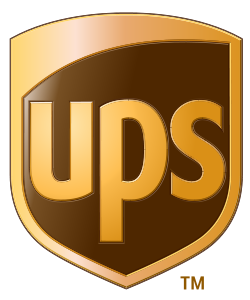

My Reviews – A Dignified Exit
 A Dignified Exit by John J Asher
A Dignified Exit by John J Asher
I generally read commercial fiction, mysteries and thrillers for the most part, so it's a rare day that a book like John J. Asher's A Dignified Exit finds its way onto my bookshelves. And to provide full disclosure, the author is a friend of mine for whom I have the greatest respect as a writer and artist.
Before purchasing the paperback edition, I'd read bits and pieces, including a broad overview as I helped format his manuscript for an eBook. And it is safe to say that nothing in those "snacks" could have prepared me for sitting down to the full meal.
I'm currently less than 100 pages into the book, and back on page one I would have never predicted the smooth and effortless way Asher manages to maneuver his way past my mystery/thriller bias with the character of Monroe Colson. No action heroes here, only a flawed man, with poignant backstory aplenty, who in essence dares me not to engage with him on a journey to a dignified exit.
This review is a work in progress, and I will return to it soon as I continue to explore this marvelous book.
December 22, 2011
The Indie Wars – Reviews and the Four Horsemen
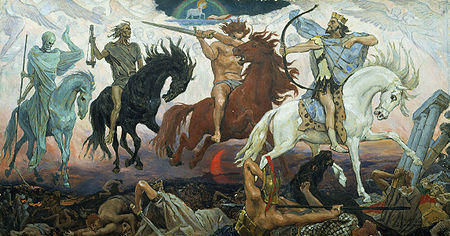 I belong to the Novel-In-Progress Group (NIP) of Austin, which has the distinction of being the oldest surviving writers' conclave in the city. Eight-plus years of participation have taught me many things, the most basic of which is that the creative cocoon surrounding a writer's desk is both a blessing and a curse.
I belong to the Novel-In-Progress Group (NIP) of Austin, which has the distinction of being the oldest surviving writers' conclave in the city. Eight-plus years of participation have taught me many things, the most basic of which is that the creative cocoon surrounding a writer's desk is both a blessing and a curse.
A blessing, in that it's a marvelous environment to gift your imagination with free reign to transport you far away into new worlds of your own making. A curse, in that if you never force yourself to leave, your words become chiseled in granite and gilded with gold. How dare anyone find fault! And have you ever tried to use a find-and-replace function on a stone tablet?
The year 2011 has brought a number of changes to NIP, the most significant of which is the relatively sudden shift of the collective group attention from legacy publishing (through an agent to one of the "Big 6″) toward doing it ourselves, now most commonly referred to as "indie" publishing.
One of our members recently shared the results of his attempt to get one of his books reviewed. He developed a list of blogs dedicated to that purpose, and after months of effort came to the conclusion that in terms of marketing success, it was not a good use of his time.
I think his experience is a perfect example of the challenge all writers face with the decision to indie publish, and it's no different than the struggles of the vast majority of legacy-published authors who don't make the bestseller lists. You're pretty much on your own there as well.
At this point in my venture onto the indie battlefield, the focus has shifted away from how to create the product, package it, convert it into both eBook formats and print, and get it uploaded to Amazon, Barnes & Noble, iTunes, Smashwords, and BooksOnBoard. Now it's all about climbing out of those five cellars so that potential buyers have the opportunity to consider the book.
They have to know it's there to discover it, and there are only three ways that happens: a chance encounter while roaming the "stacks" of their favorite online book store(s), stumbling across a review somewhere other than the place they can buy it, or hearing/reading about it among their circle of social networking contacts. Absent discoverability, the book will never have the opportunity to create exposure, gain traction, and develop momentum.
If readers have never heard of the author's name or title of the book, the connection can only begin with the "stumble" factor, certainly not the best marketing strategy. But unknown authors/books have to begin at the beginning, and one way to view that challenge is to consider what we can do to increase the likelihood that someone will "stub a toe on our titles."
If you're shopping online for books on your own, how does any book attract your attention? Without name/title recognition, is can only be the initial packaging (title and cover design). Barry Eisler describes this key element as the combination of automatic and acquired resonance, the ability of your "package" to elicit thought, memory, and/or emotion in the viewer.
Then what? Probably the summary, just as a shopper in a brick-and-mortar bookstore will pick up the book and read the jacket blurb or back-cover copy. If that intrigues them, then the excerpt has a chance to close the deal.
And at some point prior to the decision to purchase, what about those reviews? Statistics indicate a direct and exponential correlation between the number of (positive) reviews and the four horsemen of discoverability, exposure, traction, and momentum.
Dean Wesley Smith in his Think Like a Publisher series makes the point over and over again that you can't indie-publish a book and sit back to watch the sales mount up. I'm dealing with that reality right now, the challenge of deciding what is the ideal combination of actions I can be taking to give my book the best chance to climb out of the cellar.
The BooksOnBoard connection has so far been the most effective. And if you visit my page on that site and take a look at my "special page" in the "Indie Suite," you can see what the spotlight can do in the way of drawing potential readers into the cellar where indie authors are initially trapped with our books.
If writers want to help each other, the first step is to abandon any notion that we are in competition and recognize the far more beneficial condition of being partners. And in my opinion, one of the best ways is to write reviews and put them on every site you can.
Yes, that takes signing up for an account, and in some cases you have to buy a book from the online store to review it (Barnes & Noble and Smashwords, and maybe iTunes?). But Amazon and BooksOnBoard don't, and Goodreads doesn't sell books directly.
And I'm not talking about fabricating a false opinion of a book. It may not be something that you would normally read, and maybe there are some elements you don't consider particularly worthy, but it doesn't take much effort to find aspects of the story you can genuinely praise.
It's like the standard "rule" about quoting reviews. Let's say you got one from Publisher's Weekly, for example, and it read, "Couldn't put this book down. Literally stayed up all night. Then with my first cup of coffee and in the light of day it dawned on me that the book was a complete waste of time." You can delete the last sentence and everyone knows that. We can do the same with our reviews and limit them to praising the good stuff.
Supposedly, fewer than one in 200 visitors to a website or blog will ever leave a comment. This statistic doesn't apply, however, to writers. It's what we do. Nor does it apply to avid readers who love books and enjoy engaging with others about books they have read, are reading, and intend to read. And it especially doesn't apply to those who create book-review blogs like my fellow NIP member searched for.
There are hundreds of them, along with lists that attempt to categorize the many choices. Most are free, which raises the very real possibility that you'll receive value only based on what you pay for.
Rather than trying to pick and choose the blogs most suitable for your book, you can sign up for a paid "blog tour," a service that supposedly does all the work for you. Over a specified period of time, your book will be featured on a series of targeted blogs with excerpts, author interviews, question-and-answer sessions about you, your book, and specific writing topics.
Blog tours aren't cheap, at least not by my standards, and the cost represents a venture-capital investment that may well never be recovered. I've not yet decided whether to try one, and it's not about making money selling books. I abandoned that fantasy a long time ago. But at the very least, I'd rather not have to pay for the privilege of sharing my passion for writing with anyone willing to read my stories.
December 15, 2011
The Ultimate Christmas Decoration
Whether you are "into" decorating your home for Christmas or not, you probably can't avoid the commercials that show somebody causing a brownout when plugging in their extravagant display, or the one about hiring Bette Midler to add some pizazz to a local caroling group.
Then there's the jerk in my neighborhood who thinks it's funny to hang a lighted reindeer head-down from a tree in his front yard with a string of red lights dangling from its throat.
And while the pictures that follow might appeal a bit more to pilots than non-aviators, and they represent an airborne "accident" of sorts, what fascinates me is the amount of effort it took to set this up. Take a look:
November 30, 2011
How About This For A Review?
I suppose it can be said that any book review written by a friend of the author is suspect from the git-go. Especially if that friend is a writer, and even more especially if the two writers have reviewed each other's books.
Think that if you will, but if you take the time to read this review of Pilot Error written by David Mignery, (JT Conroe, author of Blue Hotel), I think you may well agree that this is an honest assessment from a reader who enjoyed the novel and didn't have to make up something to say about it.
And what really impresses me is that David describes the novel better than I can. He captures the essence of what I was trying to do, and that says something not only for the novel but how well he describes the experience of reading it.
My sincere thanks to him for honoring me by purchasing Pilot Error and taking the time to share his thoughts:
Posted on BooksOnBoard, Amazon, and Goodreads by David Mignery: Rating – Five Stars
Nick Phillips is both a private pilot and an aviation accident investigator for the NTSB with a passion for getting at the truth no matter where it leads. When he is pulled off the investigation of an air crash with serious political implications, his passion ratchets up a notch. When his family is threatened in order to make him back off, passion turns to obsession.
Wilson is a hired assassin with a passion for the details of his craft and plans for a luxurious retirement courtesy of a wealthy and powerful client with direct connections to the White House. When Nick Phillips gets in his way, a vicious personal duel erupts between the two obsessives, putting in peril the lives and careers of both innocent bystanders and guilty conspirators.
The author, Tosh McIntosh, is a retired USAF fighter pilot, and it is readily apparent that he knows his stuff, particularly when it comes to understanding what it takes to keep a ridiculously complicated, much-heavier-than-air machine separated from the terrain for a satisfactory length of time, make it go where you want it to go, and get it back on the ground without breaking something.
Pilot Error is a mystery thriller filled with the technical and operational aspects of flying. Those of the techno-geek persuasion should enjoy it very much. Those more interested in the mystery-thriller part should find the technical elements, though extensive and detailed, to be clearly explained in language most readers can understand. All readers should be impressed with how neatly these elements have been integrated into the plot. Thankfully, there is no pointless techno-babble cluttering up the story and spoiling the fun.
The plot itself is also carefully crafted with as much attention to detail as the harrowing description of the aircraft accident and the subsequent NTSB investigation into its cause.
I'm not qualified to testify as to the technical accuracy of Pilot Error, but it certainly conveys the impression of complete accuracy. I happen to know the author personally, and I know that if he writes something about flying he's going to get it right.
For more reviews, click here.
November 20, 2011
Cover Trouble — A Night in Purgatory
Although the title of this post doesn't imply the message contained within, what follows represents a display of cautious optimism with regard to solving a troubling issue with the cover for the paperback edition of Pilot Error: the sudden appearance of pixelation around the airplane image on the fourth proof copy. Well, doggonit! What happened?
I finally went to bed at 5:30 this morning and got up at 8:30 with more to do . . . like write this post to inform all of my adoring fans that the paperback is currently absent from Amazon's shelves, but it will return wearing new clothes as soon as I can get the squirming infant to sit still long enough. Here's the expanded version:
1. The big headache yesterday began when I opened the current cover in InDesign and removed the layer with the low-resolution airplane image. I still don't know how the original extracted airplane image at 122 ppi (because I didn't know to resize it to 300 in advance) became 77 ppi in the PDF file I sent to Createspace (CS–Amazon's print-on-demand branch).
2. I opened the original extracted image that I had painstakingly outlined with the Polygonal Lasso tool in Photoshop and resized it to 300 ppi. And here I ran into an issue I'll probably never get a complete grip on, and that's the relationship between image, canvas, and document size and in what order they should be changed depending on what I'm trying to do. Without going into all that, I tried to use the Place command to import the new hi-res airplane into InDesign (ID–one of the applications in Adobe's Creative Suite). When the action works as designed (no pun intended), it "loads" the cursor with the image. Then I place the cursor into the ID document with my previous cover image (minus the airplane), click on the "anchor point" for where I want the imported image to be, and it flows into the document. Voila!
3. I've done this a lot, but last night and early this morning I never managed to accomplish a simple import. We're talking hours of effort, including a stint on the InDesign forum trying to get answers. That's when I decided it wasn't worth the effort with a cover I don't like on my book that's out there RIGHT NOW for sale, and I'd spent far too much time trying to create something I can be proud of to accept anything less.
4. So I opened a previous version of the cover I designed entirely with Photoshop Elements (PSE–the non-professional version of that software). I had set that cover aside when the decision was made to use ID to build one and see if I could improve on it. The PSE cover had the same low-res airplane image, so I replaced it with a new high-res image and tweaked its position with the Move tool. After checking the position of all the cover elements with a Createspace cover template, I deleted the layer with the template so it wouldn't become a part of the finished cover. Here's where it gets really interesting.
5. For months of this process I've been unsure of how the issue of flattening relates to what I should be doing to send the cover to CS for printing. Sources online recommend that flattening (combining all layers into one) be left until the last possible moment in the transition to print. That means "let CS do it." But CS tells us to flatten the image before sending it to them. I called months ago for clarification, and was told "It really doesn't matter." Since experts on the ID forum had been supportive of the strategy of leaving it until last, and since I had assumed (incorrectly) that converting to PDF automatically flattened the file, I previously had made no attempt to do that. In each case (four covers), the results of the CS review stated that "the cover image includes transparencies that will be flattened prior to print and some color shift may occur." I just accepted that as unexplained but normal, and the covers looked good. Until this last one, that is, which unfortunately went on the books initially for sale.
6. When considering whether to flatten the image in advance, one of my questions has been, "Why not flatten the image in PSE, save as PDF, and send that to CS? Why do I need ID to do that? I think I now have the answer. (And, by the way, there will be a test at the end of this post.)
7. When I save a file as PDF from PSE, the only choice is "Photoshop PDF." I've been doing that for months, curious as to why when I click on a PSE-generated PDF file with that extension, it opens with PSE as the default application and not Adobe Reader. That was inconvenient, because there's no full-screen presentation for checking how the image will look when blown up to very near actual size. So my standard practice was to right-click on those files and select Adobe Reader as the application and view it full screen.
8. I should have taken a clue from that, along with the fact that when I save from PSE to PDF, the choices are what to name it and where to save it. That's all. At about 3:00 a.m. this morning, I found out the answers to all of this . . . I think . . . by following the steps my friend and fellow writer Cindy Stone passed along from a professional graphic-designer friend: flatten the image in PSE, import into ID, save as an INDD file, and convert to PDF within this application by selecting File>Adobe Presets>PDFX1A and>Adobe format for 2008 (or whatever is offered as the latest available). This sequence creates the REAL PDF, not the wannabe. And that's the secret as I understand it now, to be confirmed when I receive what will hopefully be the last proof copy of this novel.
9. When all this trouble started, I began thinking that buying ID was a mistake if all I could use it for was interior layout. But now I know (99% sure) that until I learn otherwise I will always build my covers in PSE, accept the limitations on typography that come with that, do the interiors in ID and the final transformation of the covers prior to upload for printing.
10. And at 3 a.m. the biggie still remained: how do I submit a proof with the novel live as opposed to before it is published? So I called CS customer support and asked if the novel remained on sale after I uploaded the new cover and during the proof period. The rep told me yes, but he was wrong.
11. When I clicked on "upload a new cover file, " I received a notice that my book would not be for sale once I clicked "proceed." But I had no choice, and although worried about what would happen with potential buyers over the next few days, I went ahead with it. I'm waiting for the CS review, after which I'll order the proof and instant shipping, and re-publish the book as soon as I confirm that the cover is satisfactory.
12. About 5 a.m. while trying to shed the tension of the last 24 hours or so, I went to Amazon, where I discovered something that may turn out to be a sneaky advantage. On my book page, there's a notice that says something like, "Temporarily out of stock. Pre-order now to reserve your copy and you will be notified when it is shipped. Your credit card will not be charged until that time."
13. Bottom line, that's very good. The shipment of less-than-satisfactory covers is terminated, and potential buyers will very likely think that Amazon ran out due to heavy demand. That's not what Amazon said, of course, but that's what some shoppers will likely intuit. And who am I to alter that perception?
But WAIT! I just did. Darn.
November 18, 2011
BooksOnBoard Link Status
I apologize for the inconvenience, especially if you are visiting due to interest in my novel Pilot Error, but the BooksOnBoard links here and on the companion site toshmcintosh.com/piloterror are temporarily inoperative. As of this writing at 1:00 p.m. on Friday, November 18th, we are anticipating resolution of the problem before the end of the day. That's the bad news, at least from my perspective.
The good news is that the emailers and author suite publicity campaigns are being held in abeyance until the "not available" status of my novel (and a few others in the same predicament) is removed.
In the meantime, if you wish to order the novel, any and all formats are available now by visiting one of the other online stores listed in the sidebar.
Thank you in advance for your interest, your visit, and especially your purchase should you choose to do so.
November 17, 2011
Pulling the Publish Trigger — Adventures in Indie Land
The battles in the Indie Wars just keep on a'comin'.
I wrote this post on Wednesday evening, November 16th, intending to publish it on Thursday:
The time has come to announce the official publication date of Pilot Error, and I have just completed the final steps to offer the novel for sale on multiple outlets.
Here's the summary scoop:
eBook (ePub) on BooksOnBoard
eBook (ePub) on Barnes & Noble
eBook (MOBI) on Amazon
eBook (ePub) on iTunes/iBookstore (pending review)
Paperback on Amazon (appears on the same page with the eBook)
Signed copies of the paperback direct from the author (coming soon)
Ten different formats on Smashwords
Now comes the really hard part: implementing a plan to enhance discoverability, gain exposure, and develop traction in the marketplace.
I've got lots of work ahead of me to get my two blogs set up to integrate with all the available social networking opportunities and include links to the sales outlets. In the meantime, my part-time association with BooksOnBoard has put me in a position to take advantage of their pre-Thanksgiving media effort.
On Friday, I'll be one of ten authors featured on a mailer campaign to about 250,000 potential readers and one of five in an "authors' suite" presentation with each of the book covers stacked vertically along the side. Click on a cover and the book and author information window opens. I saw the draft of it today and it's really nice.
In this blog and its companion, toshmcintosh.com/piloterror, sales links take you directly to the novel's book page.
It is now Thursday evening, after a morning filled with the frantic scrambling of a frustrated indie author trying to recover from a shock not unlike that of realizing that you have just sent an email with confidential, restricted, proprietary information to your entire address book.
Okay, I confess. That's a little overstated. A little.
So here's the deal, with a bit of preface to lead off:
The problem for the moment is that my novel is in the bookstore cellar, and believe it or not, there are about 20+ others that show up with a search for Pilot Error. More novels with that title than I ever imagined, and a bunch of non-fiction about aviation safety. This puts me on one of the last pages, which is tantamount to being not only in a dark, dank and musty place, but hidden behind the coal bin.
Cindy Stone, a good friend and fellow writer, informed me this morning that Amazon has me listed in Aviation Thrillers, but that it's not for sale yet. I have no idea what that means, because I've always found it for sale when searching for the title.
I'm just getting my feet wet in the marketing side of this saga, and at first blush it's looking as if the issue is essentially no different than SEO for a website. Knowing how to optimize your marketing to be on the first page of a relevant search is no less crucial than when Googling for anything. How many people ever get past the first page of results?
I'd like to take this opportunity to offer a caution, the result of a lesson learned through hard experience, for those visitors who might someday arrive at the point of indie-publishing a print-on-demand paperback. I'm using CreateSpace, Amazon's POD branch, but it probably works much the same for other service providers.
The process basically involves submitting two files, one for the interior and one for the cover, and requesting a review. In a day or so, you receive the results, which note anything that must be changed to comply with requirements, and anything that is recommended to be changed, but which can be ignored at the author's discretion. Assuming there are no must's in the report, you have the option of ordering a proof or electing to approve publication without examining a proof copy.
I've submitted four different sets of files during the struggle to get this book ready, and I wasn't about to send it to publication without taking a close look at each one of them. The last proof had only one objective: evaluate the appearance of a new format for the main body text with a different font, font size, and leading (line spacing). With the time constraints of trying to be ready for the BooksOnBoard media day, I was in a rush to get this latest proof in my hands so I could pull the publish trigger and get the print version out there to coincide with publication of the eBooks. That self-imposed time crunch led to a mistake.
The covers on all of the first three proofs exceeded every standard that this amateur designer had set for himself. So when the final proof arrived late Tuesday afternoon, and with the media blitz scheduled to begin the next day, I immediately opened the book and carefully examined every page. Satisfied with the result, I approved the novel for sale and ordered 30 books for offering autographed copies.
This morning I had three of the four proof versions on my desk and just happened to notice that the cover for the brand-new hot-off-the-press Pilot Error had a problem. The airplane, which I had extracted from a high-resolution image by meticulously outlining it with a special tool in Photoshop, had suddenly developed ragged (pixelated) edges.
Stunned is way too soft a word to describe my reaction. When placed side-by-side with each of the other proof versions, it was noticeable enough that I wondered how I had missed it. The reason is, of course, that I never really looked at it. I had assumed that since I hadn't changed the cover file, and every other cover had been more than acceptable (at least to the author), I didn't need to. Wrong.
I'm no expert, but my guess is that whenever one of the files is new and requires a review, CS reviews both the new and the old and converts them together to print the next proof. As I've learned all too well over the past seven months, digital transformations are not totally reliable, and this is very likely a case of something gone wrong that's out of my hands.
That's why the call it a proof, Tosh.
I haven't done all this work to accept something less at the endgame, so frantic actions ensued. And let me tell you right now that CreateSpace Customer Service has a contact function that is absolutely fantastic: 24/7/365, you enter your phone number, click CALL ME, and I'm not kidding, the phone rings within about a second. You're greeted with a recorded message, of course, but after being told to wait for the next available representative, a real, honest-to-goodness live person has come on the line and taken care of whatever my issues have been.
In this case, the rep found that the order for 30 copies had not yet been filled. She put a hold on it, apologized for needing to terminate the call, and explained that she would personally contact the production floor immediately to follow up. A few hours later, I received notice that the order has been canceled, the problem forwarded to Technical Services, and I would be contacted within the next two business days regarding a solution.
For those of you who have requested information about when and where you can buy a paperback for the best effect upon sales and marketing, the when is easy: rat now, as we say in Texas. But I have to add the caveat that for the moment, the wings of the airplane on this current version are slightly jagged on the edges. It's something you might notice at first glance (or not) and care about (or not), but I'll make a deal with you.
Early sales are important, so if you buy one now and later find that you feel cheated by the quality of the cover image, I'll replace the book at no cost to you. If that's a deal, please go buy one. =;-)
As for the where, please use the BooksOnBoard link in the Where to Buy sidebar on this blog, which will take you to my book page at BooksOnBoard. There you will find the Buy for Kindle link, which takes you to the Amazon page with both the eBook and the paparback.
And if you really want to help out, write a review (a positive one, I hope) on both sites as well. This is very important for gaining initial momentum.
Why can't it just look like this . . .?
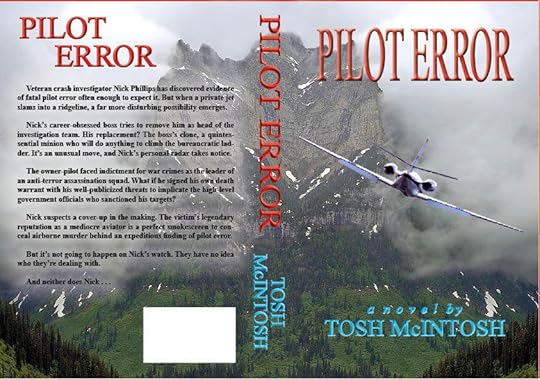 . . . and that's a bogus question, by the way.
. . . and that's a bogus question, by the way.
Caution: tech dump: The image above is a JPEG file converted from the original InDesign source used to build the cover, the same file I converted to PDF and uploaded to CreateSpace for printing. The maximum resolution viewable for images on computer screens is 72 dpi, so this can hardly be used to evaluate what the real cover looks like, especially since the image that ends up on the cover is never converted to jpeg on the road to getting there.
If I zoom in on the image, I can begin to see the pixelation, especially around the airplane's wings. This allows me to compare the image with earlier versions of the cover to determine if the pixelation has been there all along. If so, it's obvious that Createspace did something different during this latest printing job.
Another consideration: Take a look at the header image at the top of this post. Then click on the cover image in the sidebar. The airplane layer is the same one used on all the covers. It's also a JPEG, but the source file is from a version of the cover designed with Photoshop rather than InDesign. From what I've been told and read, InDesign is more than capable of creating high-quality images in print. Which leads me right back to where I started from.
What's going on with my cover? Stay tuned for the answer.


